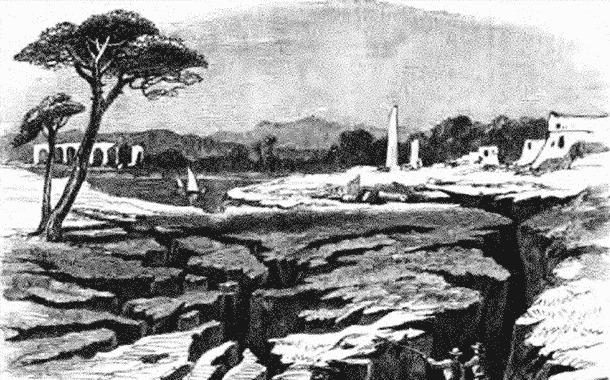<![CDATA[A group of archaeologists from the University of Haifa have discovered numerous items that offer new insights into the earthquake that shattered the ancient city of Hippos in 363 AD. The team has uncovered crushed bones, catapult ammunition and a dove-shaped gold pendant close to a site next to Lake Kinneret. Archaeologists have also managed to uncover the marble leg of a statue that dates back almost 2000 years. The ancient city of Hippos was located close to modern day Kibbutz Ein Gev, on the Israeli side of the armistice line with Syria. Hippos was situated on Susita Mountain, between the south western Golan Mountain Range and the Kinneret Valley. It was a member of the Decapolis, a group of ten cities that were closely tied to the Greek and Roman empires. Hippos was founded in the second century BC. It was subjected to two well documented earthquakes. The first occurred in 363 AD and caused massive destruction. Nevertheless, the city managed to recover from the damage and rebuild itself. The second earthquake occurred in 749 AD and completely destroyed Hippos. The ancient city was then abandoned as all hope of recovery vanished. Dr. Michael Eisenberg, the head of excavation for the project, stated that the entire picture of Hippos' fate is finally becoming clear due to the discoveries made at this site. Although Hippos excavations have been going on for fifteen years, major inroads were only made in the past few. Evidence of the destruction caused by the 363 AD earthquake was first uncovered last year. The latest discoveries are by far the most interesting. An archaeological group, led by Haim Sholnik, discovered a number of skeletons that had been crushed under a collapsed roof in the area that served as the city's marketplace. The dove-shaped gold pendant was also found there. These discoveries also offered the first evidence of the destroyed Roman baths and basilica that were never rebuilt. The excavations revealed that the earthquake was so powerful it took almost twenty years for the city to recover from the damage that it caused. Eisenberg also offered insights into the marble leg that was uncovered. Although it might be too early to determine the person depicted in the sculpture, it seems that the entire thing was more than two meters tall. Eisenberg hopes that as excavations proceed, the group will find other pieces of the sculpture and shed light on the identity of the man it depicts. Archaeologists also uncovered a fortified space that was built for an eight meter long catapult. This space was a part of the city's defences during the Roman period. A number of boulders that fit the catapult, as well as numerous stones that were built for smaller launchers, have also been discovered. ]]>
Further Light Shed On 363 AD Galilee Earthquake
